Android 3.1 on the ASUS Eee Pad Transformer
by Anand Lal Shimpi on May 28, 2011 8:15 PM EST- Posted in
- Tablets
- Eee Pad
- Asus
- Smartphones
- Android 3.1
- Mobile
I was pleasantly surprised by ASUS' Eee Pad Transformer. In a sea of clones, ASUS managed to produce the first Honeycomb tablet that was truly different in more than just styling and software preload. As the first PC maker to build a Honeycomb tablet, ASUS brought some new perspective to the game - which had previously been dominated by players from the smartphone industry.
From a hardware standpoint, the Eee Pad Transformer was nothing new. Its mostly plastic construction helped keep costs down but ASUS managed to get the overall device to feel pretty decent, aside from some creaking. The form factor itself was quite pleasant, the Eee Pad felt good to hold. Internally driven by NVIDIA's Tegra 2 SoC, performance and battery life were similar to other Honeycomb tablets we'd reviewed. Not as good as the iPad 2, but still better than most notebooks/netbooks. ASUS also shopped at the right places for the display panel: its quality and characteristics rivaled those of the iPad 2. In fact our only real complaint about the Eee Pad was that its display was far too glossy. It's not a huge problem indoors but held up against rival Samsung's Galaxy Tab 10.1 or the iPad 2 and it is distracting.
By avoiding an aluminum chassis, ASUS was able to build and sell the Eee Pad for $399 - making it the cheapest Honeycomb tablet on the market today. Price alone isn't what ASUS was leaning on however. The real selling point of the Eee Pad is its ability to transform into a 10.1-inch netbook via an optional keyboard+battery dock. With a street price of $150 and often available in more affordable bundles, the dock gave us a peak at one potential future of computing. As a standalone tablet the Eee Pad held its own against the competition, but when docked it became virtually indistinguishable from a low end PC. Apps like Polaris Office give you access to read/write Word and Excel documents, while the full keyboard and mouse make typing long emails or even articles so much better. It's not the perfect PC replacement as a number of file types are still not supported (Polaris won't let you so much as view a .pptx file) but it's amazingly competent for an OS with its roots in smartphones. The extra battery life you get from the dock was also much appreciated. As a glorified typewriter, the combination would easily last you on a flight from California to Japan (or LA to Taiwan like I'm on today). The solution has potential, but it also has problems.
I ran into a number of hiccups with the setup in my review of it last month. Some of the issues were of course due to the early nature of Honeycomb, while others were just problems with ASUS' implementation. Just yesterday ASUS gave me a drop of the OTA (over the air) update that's coming to all Eee Pad users on Monday. This update will give the Eee Pad Android 3.1, the long-awaited point release to Honeycomb that is supposed to fix bugs, improve performance and even enable some new functionality. Xoom owners got access to the update earlier this month thanks to it being Google's launch device for Honeycomb, but ASUS isn't far behind.
I haven't had a lot of time with the update but I wanted to go over some of the enhancements and give you Eee Pad users a preview of what's to come on Monday.
Improved 3D Performance
Just as we have different CPU/GPU configurations for notebooks and desktops, in the future I'm expecting to see different SoCs targeted at smartphones and tablets. Today however, the two share a common architecture with most SoCs optimized for the larger portion of the market - smartphones. The current one-size-fits-all approach has consequences for tablets. NVIDIA's Tegra 2 for example is clearly built for smartphones with either a 800 x 480 or 960 x 540 display resolution, however it's used in tablets running at 1280 x 800. With nearly twice as many pixels to render it's not surprising that while the Tegra 2 performs exceptionally well on a smartphone, its 3D performance suffers on a high resolution tablet. It's no different than buying a PC video card - a GPU that performs well on a 1680 x 1050 display may not be able to drive a 2560 x 1440 display.
In our first Honeycomb review I complained that some UI animations and transitions lacked the smoothness that I expected from a fully GPU accelerated UI. Google argued that part of the reason was the display resolution, but it also conceded that there was still room for improvement in drivers. Android 3.1 gives us that improvement.
The performance impact is easily seen in our standard 3D benchmarks. Let's start with GLBenchmark 2.0:
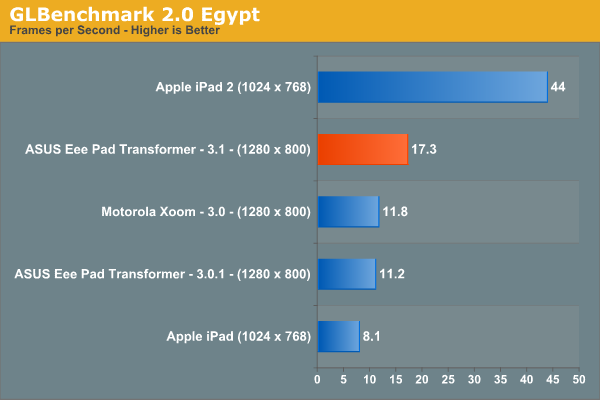
The Egypt benchmark saw a 54% increase in performance. I don't doubt that some of this performance improvement was NVIDIA simply optimizing for the benchmark, but a lot of it translates into real world performance improvements as well.
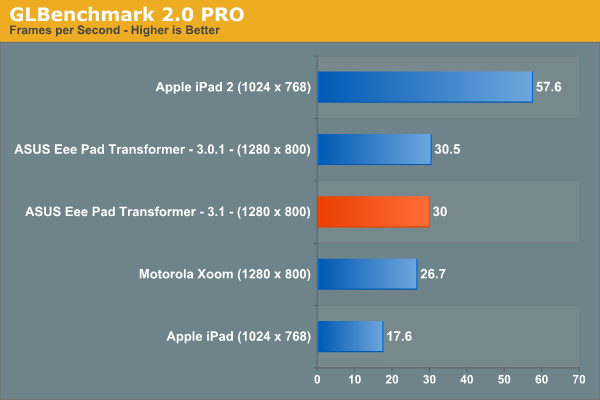
GLBenchmark PRO doesn't show any increase in performance by comparison, perhaps indicating that we'll see a greater increase in OpenGL ES 2.0 workloads.
We've added two new tests to the suite from Rightware: Taiji and Hover from the BaseMark ES2.0 suite (basically the updated version of 3DMarkMobile):


3D performance improves in both tests by 24% and 10% respectively.
The impact on GPU performance isn't limited to just 3D games, the Honeycomb UI is now noticeably quicker. Everything is snappier, which implies more than just a GPU performance improvement but the other part of that is an improvement in UI frame rate. Swiping between home screens is pretty similar to 3.0.1, but the experience is far more consistent. While 3.0.1 was more likely to chop, 3.1 seems to be more resistant to slowdowns that impact UI speed. Renegade background apps can still ruin the experience - caching songs from Google Music in the background made the Eee Pad extremely slow.
Calling up the app launcher is still not smooth, but boy is it smoother/faster than before. Even details like the circle animation when you unlock the device are smoother on 3.1.
The iPad 2 still does a better overall job of giving the UI thread high priority and keeping the interface running at full frame rate, but Android 3.1 takes a step in the right direction. If you were unhappy with the UI experience on 3.0.1, the experience with 3.1 is a lot better but still not perfect. If you were happy with 3.0.1 however, prepare to be even happier.


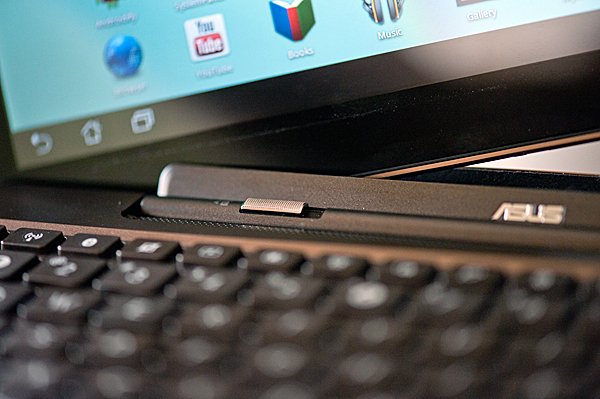
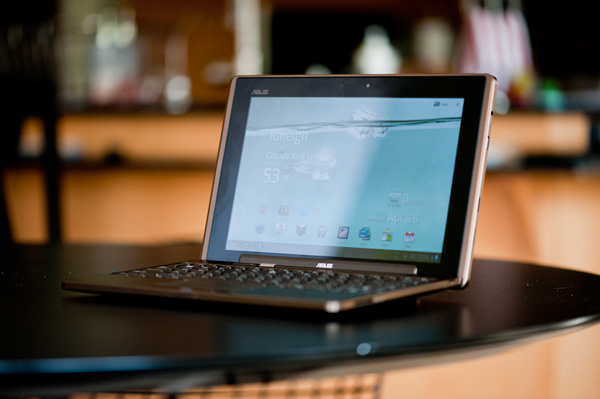
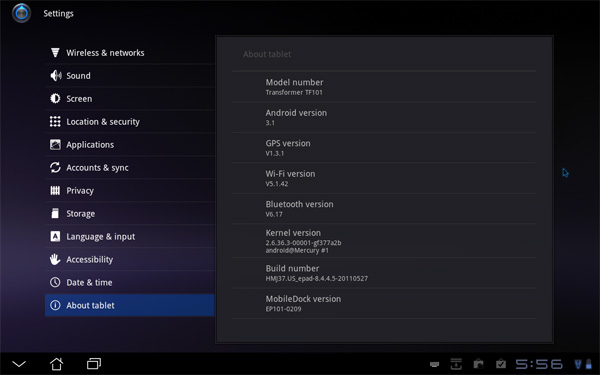

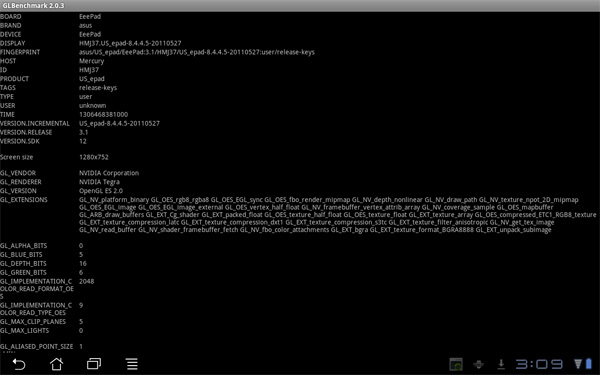
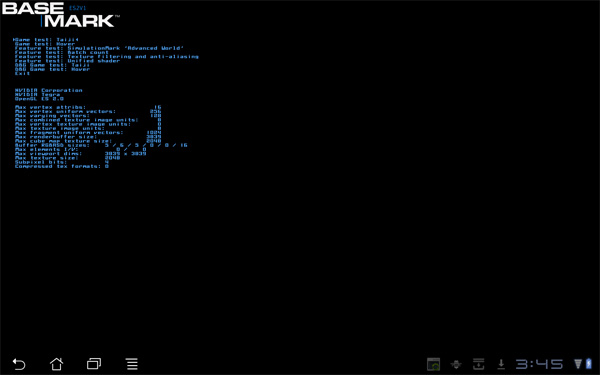








43 Comments
View All Comments
vision33r - Sunday, May 29, 2011 - link
From hardware to software the iPad 2 won't be touched by anyone this year. Even the upcoming Samsung Galaxy Tab II will just be another iClone running Honeyblow.Just look at the hardware performance differences, iPad 2 is the best gaming platform no wonder it has Nintendo 3DS beat easily this year.
Like Steve says all other tablets will be vaporware. Even the the Asus transformer will not be wanted after 2-3 month when another tablet out does it and this vicious cycle of competition helps Apple.
ncb1010 - Sunday, May 29, 2011 - link
"From hardware to software the iPad 2 won't be touched by anyone this year."Kal-El is coming out in a shipping tablet later this year and will show a 5x graphics improvement over Tegra 2. In addition, it will have 4 Cortex-A9 vs 2 Cortex-A9. All of a sudden that 2x perform increase seen by the iPad 2 over Tegra based Android system evaporates and the roles are reversed. There will certainly be hardware later this year that will outperform iPad 2. Software is up for debate based on usage scenarios.
"Just look at the hardware performance differences, iPad 2 is the best gaming platform no wonder it has Nintendo 3DS beat easily this year."
If you truly need to compare a handheld to a tablet in performance, I could just as easily compare a 360 or PS3 against an iPad and show how it wipes the floor with it. We are also talking about a $250 vs a $500 device regardless of being different form factors.
If you are talking about unit sales, the Nintendo 3DS actually is nothing to sneeze at, after 1 month on the market in Japan and 1 week on the market elsewhere, it sold 3.5 million units. Estimates of iPad 2 sales in the first month of availability were 2.4-2.6 million units which are significantly lower than 3DS.
"Like Steve says all other tablets will be vaporware. Even the the Asus transformer will not be wanted after 2-3 month when another tablet out does it and this vicious cycle of competition helps Apple."
You don't have a clue what vaporware actually means? Vaporware is where a product doesn't get released. I don't know how you support your statement that all other tablets are vaporware by stating that another tablet gets released that is better than a previous one. In fact, it directly contradicts your statement by implying that there is a steady stream of released (i.e. not vaporware) tablets.
As far as continual improvement in the competitor's offering helping Apple, I am afraid that is wishful thinking. While releasing a better product does make other Android tablets less competitive than they once were, it also changes the competitive landscape when comparing iPad to Android devices more favorably towards Android than it was before. For instance, when the Quad Core Tegra 3 tablet gets released half way through a iPad refresh, the ARM SoC GPU performance crown will have been stolen from Apple.
thunng8 - Sunday, May 29, 2011 - link
You do realise that 5X performance increases is a purely marketing figure (like the 9x increase Apple claims for the ipad2 compared to ipad). I'll wait to see actual benchmarks before giving the crown to Tegra3.Zingam - Monday, May 30, 2011 - link
Kal-El products 2012 :) So the guy is right nothing will touch iPad any time soon. Too bad... I don't want Apple too.robinthakur - Tuesday, May 31, 2011 - link
I think I can see what he was getting at actually. For build quality and coherence of the platform environment, nothing is likely to touch the iPad2 until the next revision next March/April. There is an inherent problem with the constant power race and replacing chipsets/GPU's etc beyond the impressive benchmark numbers, in that it is unlikely that Apps will make proper use of the increase in power during the useful life of the tablet apart from things made by Google and a handful of others. If they were to do so, then they would be virtually unusable on the earlier hardware revisions. I can now see why Android marketplace makes hardly any revenue for it's developers compared to the AppStore and the same issue is now happening on the tablet side as the phone side! They need a common spec to develop for not a constantly changing one. At the end of the day, most people don't just sit at home running benchmarks on their tablets. Is there any software as well made or optimised as Garageband for Android?Instead of saying they are vapourware, a better saying would be that they would be 'gone in a flash'. Having been in the market for a Honeycomb tablet I initially focussed on the Xoom, then got put off by reviews and the high price, then the Iconia and was put off by reviews and then the Asus, but found it ludicrous that they could launch it without a working camera. Across all of them i found it hard to swallow the high price compared to the cheap-feeling build quality. I finally cracked and bought an iPad2 and don't regret my decision because you actually buy peace of mind that what you bought will not be instantly obsolete. His point about the 3DS is not well made though.
DigitalFreak - Sunday, May 29, 2011 - link
Crawl back into your mama's basement, fanboy.spambonk - Sunday, May 29, 2011 - link
And still no comment about the supposed light bleed which gets worse as you use the device http://forum.xda-developers.com/showthread.php?t=1...Omid.M - Sunday, May 29, 2011 - link
Seems to follow the adage of "wait for 3rd gen." Well, I'd consider a Kal-El tablet to be 3rd gen, anyway.1st gen - G tab, Samsung Galaxy Tab 7"
2nd gen - Eee Pad, Xoom, Galaxy Tab 10.1
3rd gen - Kal-El
I'm sad that even the Tab 10.1, made by a company known for its display tech, seems to have a mediocre screen (allegedly, based on a review of the Google I/O 2011 Tabs that were given out).
None of the Android tabs have screens that seem to rival the quality of the iPad 2's.
@moids
Zingam - Monday, May 30, 2011 - link
By the time when generation 7 is out (just like Windows) we may actually see usable tablets. Until that time they'll be toys.How about 2015?
Shinobi_III - Tuesday, May 31, 2011 - link
Was it only me that noticed the hilarious grammatical error in the firmware update dialogue?"Please do not remove the mobile dock and shut down your device."
For the lazy, it should obviously be "...or shut down..."
Now they're saying that I shouldn't remove it, and then turn it off while flashing... =)